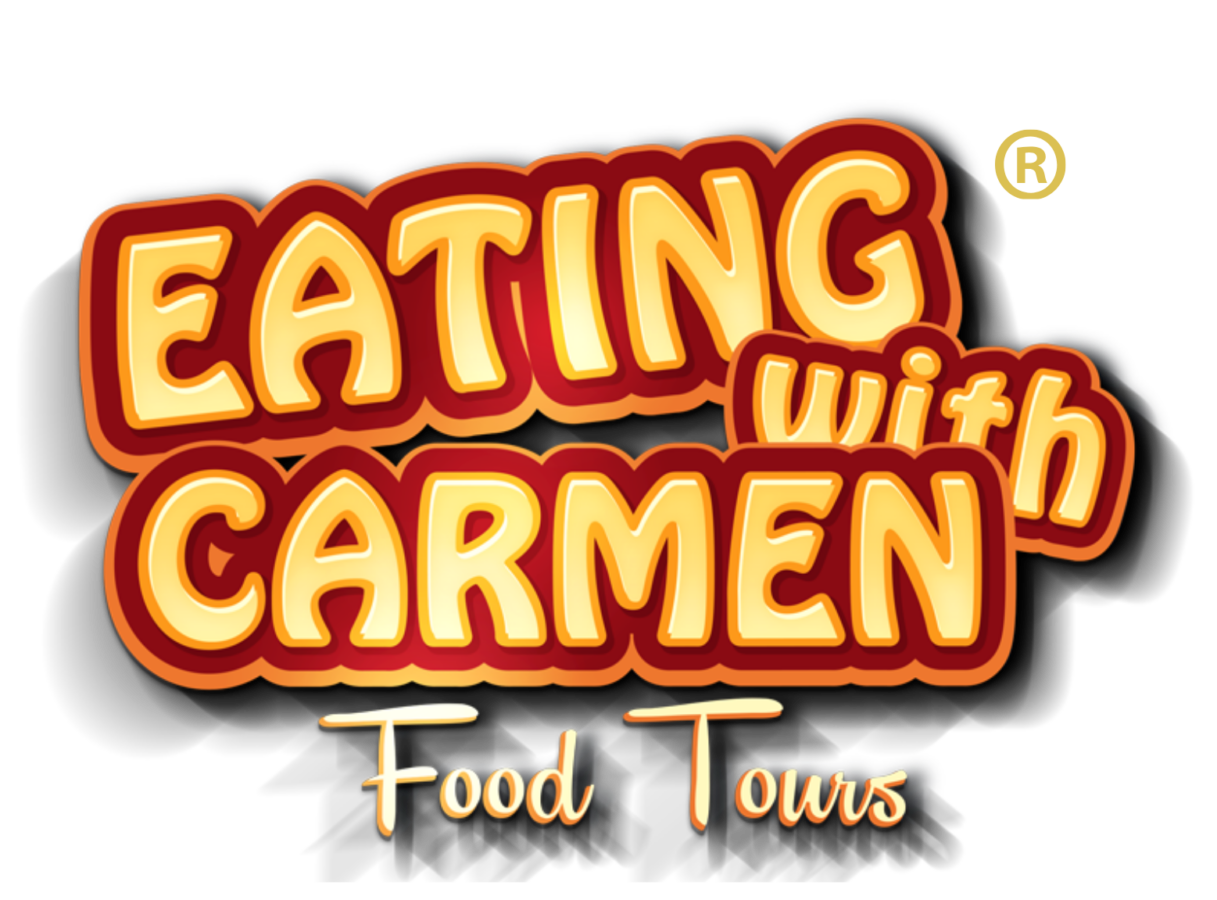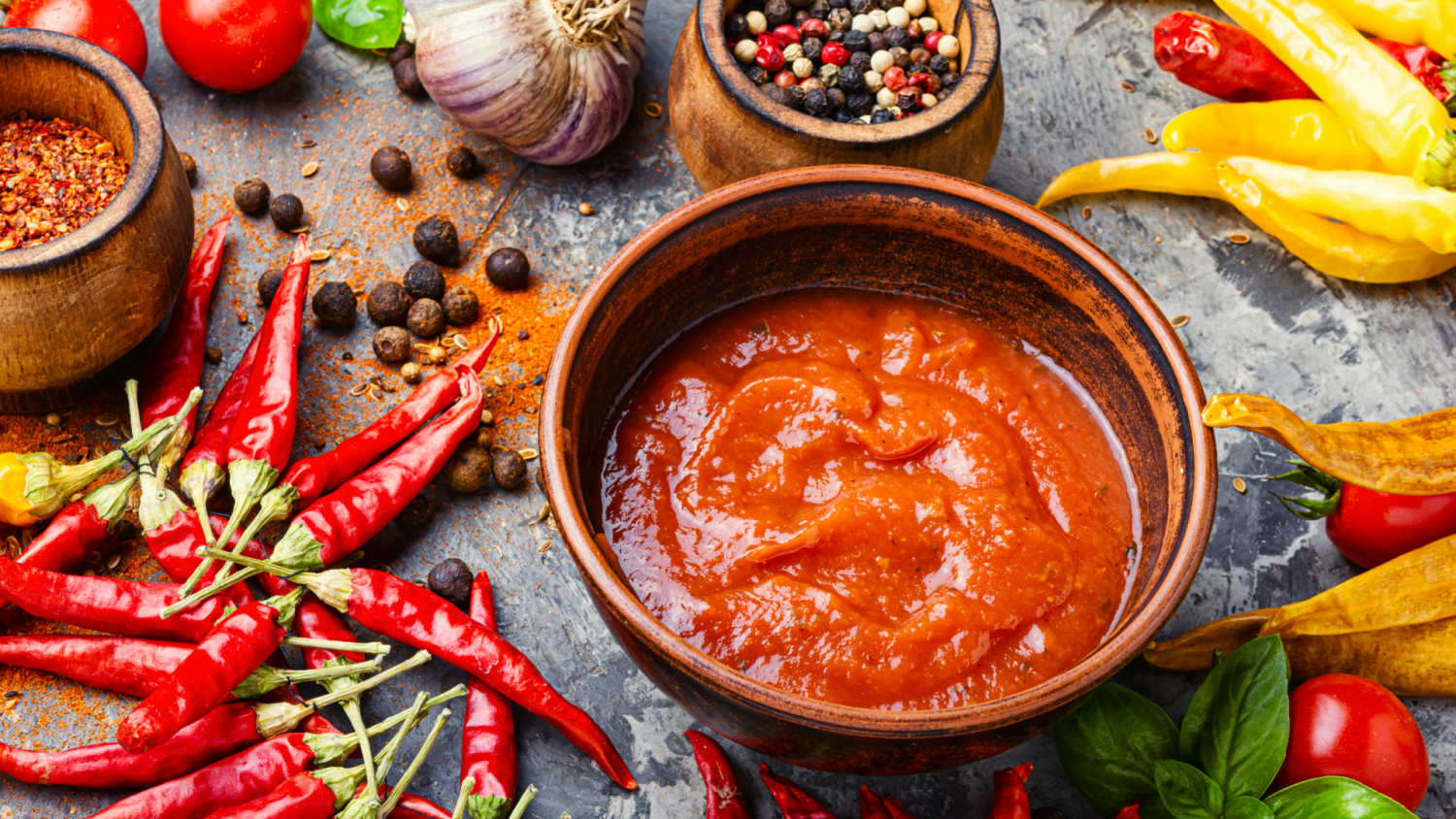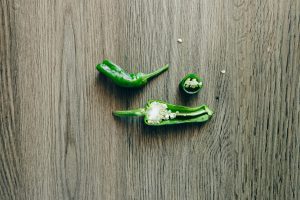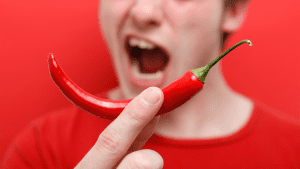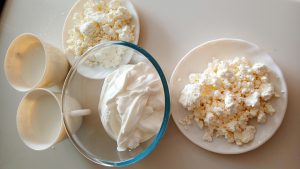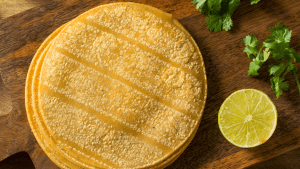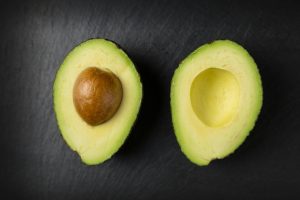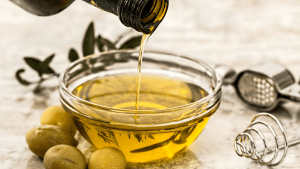Spice is a defining feature in many global cuisines from Latin America to Asia. Mastering the art of cooking and enjoying spicy food is an acquired skill and starts with training your taste buds.
In Mexican cuisine, a little heat is a must! From the daily diet of a typical Mexican to every Food Tour at Eating With Carmen, you’ll find something spicy on the menu whether it’s fresh salsa to complement the perfect taco, a dusting of chili powder to enhance the flavors of fruits like mango, pineapple, and coconut, or even sprinkled over shredded carrots!
Traditional dishes like Chile en Nogada or Chile Relleno, both made with Poblano chiles, help train your palate to handle that tingly sensation of spice without feeling like you’ve swallowed a firecracker. And then there’s Mole where you can experience up to five different types of dried chiles, savoring their rich flavor rather than just the burn.
Chiles like Habanero, Chiltepin, Poblano, Serrano, and Chipotle appear in most classic Mexican recipes. While some chiles are milder, others can make your mouth (and body) feel like it’s on fire. But don’t worry soothing that fire is all about understanding the science behind the burn. Knowing what to reach for and what to avoid once that heat kicks in is key.
THE EFFECTS OF EATING SPICY FOOD ON YOUR BODY
For some, eating chiles can cause intense, unbearable pain, while others might find it to be a delicious experience. Whatever the case, chiles have various effects on the body including some natural benefits, though overconsumption always comes at a certain risk.
Chiles contain an alkaline, oil-based compound called Capsaicin. This molecule tricks your temperature-sensitive pain receptors, causing that burning sensation even though no real heat or damage is involved. Essentially, Capsaicin is making your brain think you’re in danger, and that’s why it feels like your mouth is on fire.
Phto by Nataliya Vaitkevich:
Here’s the twist, if you eat spicy food regularly, your pain receptors can become desensitized to Capsaicin, which is why chile enthusiasts seem to handle heat better than those who don’t eat it as often. But for “spice rookies”, that burning sensation can be overwhelming, and you’ll likely reach for something to cool your mouth down quickly.
While your mouth isn’t literally on fire, your brain thinks you’re overheating, which is why your body tries to cool itself down by sweating. But since that sweat doesn’t seem to help with the heat in your mouth, you might be tempted to grab a beverage or another food item to ease the burn. But be careful because your first choice could only make things worse. And since your friend Abby here, wants to make your immersion in Mexican culture as smooth as possible, here’s my list of do’s and don’ts when you’re “enchilado”.
(“Enchilado” is the word Mexicans use to describe that fiery, tingling sensation after eating spicy food. At first, it’s just a little tickle on your tongue, but then it rises sending shivers down your spine.)
Source canva.com
DON’T’S
Water
Cool water might be the first thing most people think of to cool their mouth down when they feel the burn. Bad idea… Since capsaicin is oil-based, drinking water will just spread it around, making the burning worse.
Photo by Bruno Cortés FP
Alcohol
Alcohol doesn’t help with the burn contrary to what you might think. While alcohol can dull pain, you’d need a lot of it to have any effect. Plus, most alcoholic beverages are more water than alcohol, so they won’t do much to alleviate the heat.
Photo by Engin Akyurt
Soda
Avoid soda at all costs. The gas on them will only make the sensation worse.
Photo by AS Photography
WARNING!
When you’re “enchilado” your eyes and nose will be dripping, however, if your hands have been in direct contact with chiles or salsa, never, I repeat, NEVER rub your eyes or nose!
Trust me, you’ll regret it.
DO’S
Dairy Products
Milk-based foods contain a protein called casein, which helps break down the capsaicin molecules. Think of casein as if it’s soap, washing away the oily capsaicin from your mouth. Cow’s milk (not almond, coconut, or soy), yogurt, cottage cheese, or sour cream are your best bets.
Photo by Konstantin Klimov
Acidic Foods or Drinks
If you want to avoid dairy, you can balance out the capsaicin with acid. Since capsaicin is alkaline, pairing it with something acidic such as lemonade, limeade, orange juice, or a tomato-based drink can help neutralize the burn.
Photo by AS Photography
Carbs
Carbs like bread, rice, or tortillas can act as a physical barrier between the capsaicin molecules and your pain receptors, offering a little relief.
Source canva.com
Salt
A very common Mexican trick is to sprinkle a coarse of salt which can help ease the heat. Just put some salt on your hand or have a pinch of salt in a tortilla!
Photo by Marek Kupiec
Sweets and Fruits
Sweet treats like Pan dulce, cookies, or even a spoonful of honey can help neutralize the burn. Fruits like avocado and banana are particularly good at soothing the heat.
Photo by Foodie Factor
Oil
A spoonful of any oil you have on hand (canola, olive, soybean, or coconut oil) can help coat your mouth, wash away the capsaicin, and reduce the sensation of heat.
Source canva.com
Eating chiles or spicy foods is not so bad, your brain confuses the heat from capsaicin with pain and releases endorphins and dopamine. Endorphins are natural painkillers, giving you a euphoric feeling, while dopamine creates a sense of pleasure and improves mood. So, that fiery sensation? It’s actually boosting your mood and it’s probably one of many reasons why Mexicans are always in such a good mood!
As I always tell the foodies on the Food Tours, if there’s one thing you can´t trust me or any spicy food lover on, it’s that when we say something “No pica” or “isn’t spicy”, chances are, it probably is. Every palate perceives heat differently, and whether you’re a lifelong chile-pro or a newbie, spice is a whole new adventure for your taste buds!
To learn more about the types of chiles used in Mexican cuisine, their natural benefits, and the incredible variety of chiles found around the world, don’t miss The Ultimate Chile Guide from Eating With Carmen!
And always remember to SPICE IT UP!
-Abbey, tiny but spicy.
